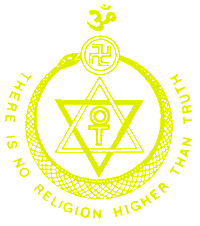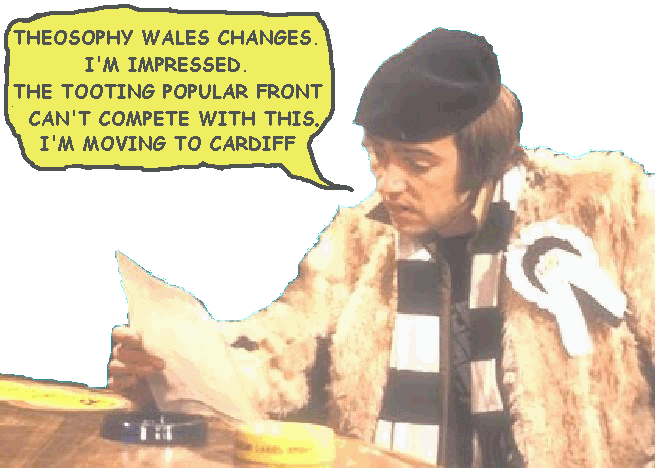HORNET
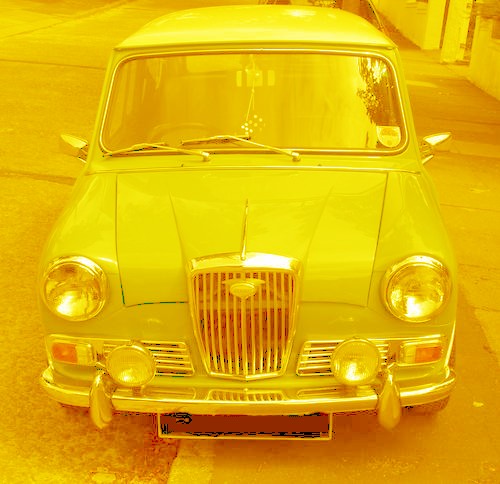
The Wolseley Hornet 1960s model
An upmarket version of the Mini
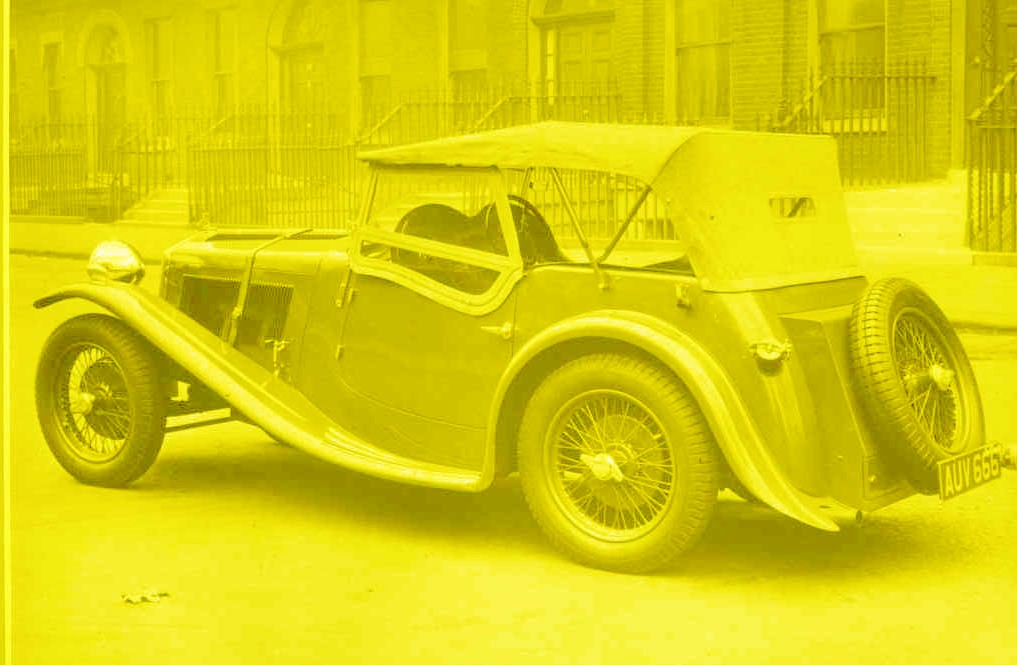
A 1930s Wolseley Hornet sports car
The bodywork for these was made to order by
a coachbuilder
of the customer’s choice and there were
many variations of this car.
The series ran from 1930 to 1935
The
Wolseley Hornet both in its 1930s sports car
incarnation,
and its 1960s posh mini version, has
very
little (in fact nothing) to do with Theosophy
but
we have found that Theosophists and new
enquirers
do like pictures of classic cars
and
we get a lot of positive feedback.
You can find
Theosophy Wales groups in
Bangor, Cardiff,
Conwy & Swansea
Theosophy Wales
has no controlling body
and is made up of
independent groups
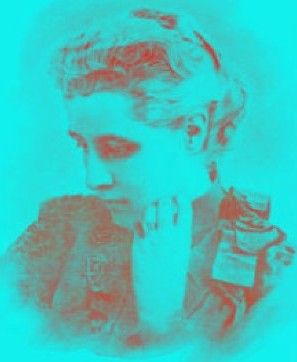
________________________
The Ancient Wisdom
by
Annie Besant
The
Astral Plane
The astral plane is the region of the universe next to
the physical, if the word "next" may be permitted in such a
connection. Life there is more active than on the physical plane, and form is
more plastic. The spirit-matter of that plane is more highly vitalised and
finer than any grade of spirit-matter in the physical world. For , as we have
seen, the ultimate physical atom, the constituent of the rarest physical ether,
has for its sphere-wall innumerable aggregations of the coarsest astral matter.
The word "next" is, however, inappropriate, as suggesting the idea
that the planes of the universe are arranged as concentric circles, one ending
where the next begins. Rather they are concentric interpenetrating spheres, not
separated from each other by distance but by difference of constitution. As air
permeates water, as ether permeates the densest solid, so does astral matter
permeate all physical. The astral world is above us, below us, on every side of
us, through us; we live and move in it, but it is intangible, invisible,
inaudible, imperceptible, because the prison of the physical body shuts us away
from it, the physical particles being too gross to be set in vibration by
astral matter.
In this chapter we shall study the plane in its
general aspects, leaving on one side for separate consideration those special
conditions of life on the astral plane surrounding the human entities who are
passing through it on their way from earth to heaven. ( Devachan, the happy or
bright state, is the Theosophical name for heaven. Kâmaloka, the place of
desire, is the name given to the conditions of intermediate life on the astral
plane).
The spirit-matter of the astral plane exists in seven
subdivisions, as we have seen in the spirit-matter of the physical. There, as
here, there are numberless combinations, forming the astral solids, liquids,
gases, and ethers. But most material forms there have a brightness, a
translucency, as compared to forms here, which have caused the epithet astral,
or starry, to be applied to them – an epithet which is, on the whole,
misleading, but is too firmly established by use to be changed. As there are no
specific names for the subdivisions of astral spirit-matter, we may use the
terrestrial designations. The main idea to be grasped is that astral objects
are combinations of astral matter, as physical objects are combinations of
physical matter, and that the astral world scenery much resembles that of earth
in consequence of its being largely made up of the astral duplicates of
physical objects.
One peculiarity, however, arrests and confuses the
untrained observer; partly because of the translucency of astral objects, and
partly because of the nature of astral vision – consciousness being less
hampered by the finer astral matter than when encased in the terrestrial –
everything is transparent, its back is visible as its front, its inside as its
outside. Some experience is needed, therefore, ere objects are correctly seen,
and a person who has developed astral vision, but has not yet had much experience
in its use, is apt to receive the most topsy-turvy impressions and to fall into
the most astounding blunders.
Another striking and at first bewildering
characteristic of the astral world is the swiftness with which forms –
especially when unconnected with any terrestrial matrix – change their
outlines.
An astral entity will change his whole appearance with
the most startling rapidity, for astral matter takes the form under every
impulse of thought, the life swiftly remoulding the form to give itself new
expression. As the great life-wave of the evolution of form passed downwards
through the astral plane, and constituted on that plane the third elemental
kingdom, the Monad drew round itself combinations of astral matter, giving to
these combinations – entitled elemental essence – a peculiar vitality and the
characteristic of responding to, and instantly taking shape under, the impulse
of thought vibrations.
This elemental essence exists in hundreds of varieties
on every subdivision of the astral plane, as though the air became visible here
– as indeed it may seen in quivering waves under great heat – and were in
constant undulatory motion with changing colours like mother-of-pearl.
This vast atmosphere of elemental essence is ever
answering to vibrations caused by thoughts, feelings, and desires, and is
thrown into commotion by a rush of any of these like bubbles in boiling water.
( C.W. Leadbeater, Astral Plane, p. 52). The duration of the form depends on
the strength of the impulse to which it owes its birth ; the clearness of its
outline depends on the precision of the thinking, and the colour depends on the
quality – intellectual, devotional, passional – of the thought.
The vague loose thoughts which are so largely produced
by undeveloped minds gather round themselves loose clouds of elemental essence
when they arrive in the astral world, and drift about, attracted hither and
thither to other clouds of similar nature, clinging round the astral bodies of
persons whose magnetism attracts them – either good or evil – and after a while
disintegrating, to again form a part of the general atmosphere of elemental
essence. While they maintain a separate existence they are living entities,
with bodies ofelemental essence and thoughts as the ensouling lives, and they
are then called artificial elementals, or thought-forms.
Clear, precise thoughts have each their own definite
shapes, with sharp clean outlines, and show an endless variety of designs. They
are shaped by vibrations set up by thought, just as on the physical plane we
find figures which are shaped by vibrations set up by sound.
"Voice-figures" offer a very fair analogy for
"thought-figures," for nature, with all her infinite variety, is very
conservative of principles, and reproduces the same methods of working on plane
after plane in her realms.
These clearly defined artificial elementals have a
longer and much more active life than their cloudy brethren, exercising a far
stronger influence on the astral bodies (and through them on the minds) of those
to whom they are attracted.
They set up in them vibrations similar to their own,
and thus thoughts spread from mind to mind without terrestrial expression. More
than this: they can be directed by the thinker towards any person he desires to
reach, their potency depending on the strength of his will and the intensity of
his mental power.
Among average people the artificial elementals created
by feeling or desire are more vigorous and more definite than those created by
thought. Thus an outburst of anger will cause a very definitely outlined and
powerful flash of red, and sustained anger will make a dangerous elemental, red
in colour, and pointed, barbed, or otherwise qualified to injure. Love, according
to its quality, will set up forms more or less beautiful in colour and design,
all shades of crimson to the most exquisite and soft hues of rose, like the
palest blushes of sunset or the dawn, clouds of tenderly strong protective
shapes. Many a Mother’s loving prayers go to hover round her son as
angel-forms, turning aside from him evil influences that perchance his own
thoughts are attracting.
It is characteristic of these artificial elementals,
when they are directed by the will towards any particular person, that they are
animated by the one impulse of carrying out the will of their creator. A
protective elemental will hover round its object, seeking any opportunity of
warding off evil or attracting good – not consciously, but by a blind impulse, as
finding there the
line of least resistance.
So, also, an elemental ensouled by a malignant thought
will hover round its victim seeking opportunity to injure. But neither the one
nor the other can make any impression unless there be in the astral body of the
object something skin to themselves, something that can answer accordingly to
their vibrations, and
thus enable them to attach themselves. If there be
nothing in him of matter cognate to their own, then by a law of their nature
they rebound from him along the path they pursued in going to him – the
magnetic trace they have left – and rush to their creator with a force
proportionate to that of their projection.
Thus a thought of deadly hatred, failing to strike the
object at which it was darted, has been known to slay its sender, while good
thoughts sent to the unworthy return as blessings to him that poured them
forth.
A very slight understanding of the astral world will
thus act as a most powerful stimulus to right thinking, and will render heavy
the sense of responsibility in regard to the thoughts and feelings, and desires
that we let loose into this astral realm. Ravening beasts of prey, rending and
devouring, are too many of
the thoughts with which men people the astral plane.
But they err from ignorance, they know not what they do. One of the objects of
theosophical teaching, partly lifting up the veil of the unseen world, is to
give men a sounder basis for conduct, a more rational appreciation of the
causes of which the effects only are seen in the terrestrial world.
A few of its doctrines are more important in their
ethical bearing than this of the creation and direction of thought-forms, or
artificial elementals, for through it man learns that his mind does not concern
himself alone, that his thoughts do not affect himself alone, but that he is
ever sending out angels and
devils into the world of men, for whose creation he is
responsible, and for whose influences he is held accountable. Let men, then,
know the law, and guide their thoughts thereby.
If, instead of taking artificial elementals
separately, we take them in the mass, it is easy to realise the tremendous
effect they have in producing national and race feelings, and thus in biasing
and prejudicing the mind. We all grow up surrounded by an atmosphere crowded
with elementals embodying certain ideas ; national prejudices, national ways of
looking at all questions, national types of feelings and thoughts, all these
play on us from our birth, aye, and before. We see everything through this
atmosphere, every thought is more or less refracted by it, and our own astral
bodies are vibrating in accord with it.
Hence the same idea will look quite different to the
Hindu, an Englishman, a Spaniard, and a Russian ; some conceptions easy to the
one will be almost impossible to the other, customs instinctively attractive to
the one are instinctively odious to the other. We are all dominated by our
national atmosphere, i.e., by that portion of the astral world immediately
surrounding us.
The thoughts of others, cast much in the same mould,
play upon us and call out from us synchronous vibrations ; they intensify the
points in which we accord with our surroundings and flatten away the
differences, and this ceaseless action upon us through the astral body
impresses on us the national half-mark
and traces channels for mental energies into which
they readily flow. Sleeping and waking , these currents play upon us, and our
very unconsciousness of their action makes it the more effective. As most people
are receptive rather than initiative in their nature, they act almost as
automatic reproducers of the
thoughts which reach them, and thus the national
atmosphere is continually intensified.
When a person is beginning to be sensitive to astral
influences, he will occasionally find himself suddenly overpowered or assailed
by a quite inexplicable and seemingly irrational dread, which swoops upon him
with even paralysing force. Fight against it as he may, he yet feels it, and
perhaps resents it. Probably there are few who have not experienced this fear
to some
extent, the uneasy dread of an invisible something,
the feeling of a presence, of "not being alone." This arises partly
from a certain hostility which animates the natural elemental world against the
human, on account of the various destructive agencies devised by mankind on the
physical plane and reacting on the astral, but is also largely due to the
presence of so many artificial elementals of an unfriendly kind, bred by human
minds.
Thoughts of hatred, jealousy, revenge, bitterness,
suspicion, discontent, go out by millions crowding the astral plane with
artificial elementals whose whole life is made of these feelings. How much also
is there of vague distrust and suspicion poured out by the ignorant against all
whose ways and appearance are alien and unfamiliar. The blind distrust of all
foreigners, the surly contempt, extending in many districts even towards
inhabitants of another country – these things also contribute evil influences
to the astral world. There being so much of these things among us, we create a
blindly hostile army on the astral plane, and this is answered in our own
astral bodies by a feeling of dread, set up by the antagonistic vibrations that
are sensed, but not understood.
Outside the class of artificial elementals, the astral
world is thickly populated, even excluding, as we do for the present, all the
human entities who have lost their physical bodies by death. There are great
hosts of natural elementals, or nature-spirits, divided into five main classes
–the elementals of the ether, the fire, the air, the water, and the earth ; the
last four groups have been termed, in mediaeval occultism, the Salamanders,
Sylphs, Undines, and Gnomes (needless to say there are two other classes,
completing the seven, not concerning us here, as they are still unmanifested).
These are the true elementals, or creatures of the
elements, earth, water, air, fire and ether, and they are severally concerned
in the carrying on of the activities connected with their own element ; they
are the channels through which work the divine energies in these several
fields, the living expressions of the law in each. At the head of each division
is a great Being, the captain of the mighty host, (Called a Deva, or God, by
the Hindus. The student may like to have the Sanskrit names of the five Gods of
the manifested elements ; Indra, lord of the Akâsha, or ether of space ; Agni,
lord of fire ; Pavana, lord of air, Varuna, lord of water ; Kshiti, lord of the
earth). the directing and guiding intelligence of the whole department of
nature which is administered and energised by the class of elementals under his
control.
Thus Agni the fire-God, is a great spiritual entity
concerned with the manifestation of fire on all planes of the universe, and
carries on his administration through the host of the fire-elementals. By
understanding the nature of these, or knowing the methods of their control, the
so-called miracles of magical feats are worked, which from time to time are
recorded in the public
press, whether they are avowedly the results of
magical arts, or are done by the aid of "spirits" – as in the case of
the late Mr. Home, who could unconcernedly pick a red-hot coal out of a blazing
fire with his fingers and hold it in his hand unhurt. Levitation (the
suspension of a heavy body in the air without visible support) and walking on
the water have been done by the aid respectively of the elementals of the air
and the water, although another method is more often employed.
As the elements enter into the human body, one or
another predominating according to the nature of the person, each human being
has relations with these elementals, the most friendly to him being those whose
element is preponderant in him. The effects of this fact are often noted, and
are popularly ascribed to "luck". A person has " a lucky
hand" in making plants grow, in lighting fires, in finding underground
water, etc. Nature is ever jostling us with her occult forces, but we are slow to
take her hints. Tradition sometimes hides a truth in a proverb or a fable, but
we have grown beyond all such "superstitions."
We find also on the astral plane, nature-spirits –
less accurately termed elementals – who are concerned with the building of
forms in the mineral, vegetable, animal, and human kingdoms. There are
nature-spirits who build up minerals, who guide the vital energies in plants,
and who molecule by molecule
form the bodies of the animal kingdom ; they are
concerned with the making of the astral bodies of minerals, plants, and
animals, as well as with that of the physical.
These are the fairies and elves of legends, the
"little people" who play so large a part in the folk lore of every
nation, the charming irresponsible children of nature, whom science had coldly
relegated to the nursery, but who will be replaced in their own grade of
natural order by the wiser scientists of a later day. Only poets and occultists
believe in them just now, poets by the
intuition of their genius, occultists by the vision of
their trained inner senses. The multitude laugh at both, most of all at the
occultists ; but it matter not – wisdom shall be justified of her children.
The play of the life-currents in the etheric doubles
of the forms in the mineral, vegetable, and animal kingdoms, awoke out of
latency the astral matter involved in the structure of their atomic and
molecular constituents. It began to thrill in a very limited way in the
minerals, and the Monad of form, exercising his organising power, drew in
materials from the astral world, and
these were built by the nature-spirits into a loosely
constituted mass, the mineral astral body.
In the vegetable world the astral bodies are a little
more organised, and their special characteristic of "feeling" begins
to appear. Dull and diffused sensations of well-being and discomfort are
observable in most plants as the results of the increasing activity of the
astral body. They dimly enjoy the air,
the rain, and the sunshine, and gropingly seek them, while
they shrink from noxious conditions. Some seek the light and some seek the
darkness ; they answer to stimuli, and adapt themselves to external conditions,
some showing plainly a sense of touch. In the animal kingdom the astral body is
more developed, reaching in the higher members of that kingdom a sufficiently
definite
organisation to cohere for some time after the death
of the physical body, and to lead an independent existence on the astral plane.
The nature-spirits concerned with the building of the
animal and human astral bodies have been given the special name of
desire-elementals, (Kâmadevas, they are called "desire-gods") because
they are strongly animated by desires of all kinds, and constantly build
themselves into the astral bodies of animals and men.
They also use the varieties of elemental essence
similar to that of which their own bodies are composed to construct the astral
bodies of animals, those bodies thus acquiring, as interwoven parts, the
centres of sensation and of the various passional activities. These centres are
stimulated into functioning by impulses received by the dense physical organs,
and transmitted by the etheric physical organs to the astral body.
Not until the astral centre is reached does the animal
feel pleasure or pain. A stone may be struck, but it will feel no pain ; it has
dense and etheric physical molecules, but its astral body is unorganised ; the
animal feels pain from a blow because he possesses the astral centres of
sensation, and the desire-elementals have woven into him their own nature.
As a new consideration enters into the work of these
elementals with the human astral body, we will finish our survey of the
inhabitants of the astral plane ere studying this more complicated astral form.
The desire-bodies, (Kâmarûpa is the technical name for
the astral body, from Kâma, desire, and rûpa, form) or astral bodies, of
animals are found, as has just been stated, to lead an independent though
fleeting existence on the astral plane after death has destroyed their physical
counterparts. In "civilised"
countries these animal astral bodies add much to the
general feeling of hostility which was spoken of above, for the organised
butchery of animals in slaughterhouses and by sport sends millions of these
annually into the astral world, full of horror, terror, and shrinking from men.
The comparatively few creatures that are allowed to
die in peace and quietness are lost in the vast hordes of the murdered, and
from the currents set up by these there rain down influences from the astral
world on the human and animal races which drive them yet further apart and
engender "instinctive" distrust and fear on the one side and lust of
inflicting cruelty on the other.
These feelings have been much intensified of late
years by the coldly devised methods of the scientific torture called
vivisection, the unmentionable barbarities of which have introduced new horrors
into the astral world by their reaction on the culprits, (See Chapter III, on
"Kâmaloka .") as well as having
increased the gulf between man and his "poor
relations".
Apart from what we may call the normal population of
the astral world, there are passing travellers in it, led there by their work,
whom we cannot leave entirely without mention. Some of these come from our own
terrestrial world, while others are visitors from loftier regions.
Of the former, many are Initiates of various grades,
some belonging to the Great White Lodge – the Himâlayan or Tibetan Brotherhood,
as it is often called (It is to some members of this Lodge that the
Theosophical Society owes its inception) – while others are members of
different occult lodges throughout the world, ranging from white through shades
of grey to black. ( Occultists who are unselfish and wholly devoted to the
carrying out of the Divine Will, or who are aiming to attain these virtues, are
called "white". Those who are selfish and are working against the
Divine purpose in the universe are called "black."
Expanding selflessness, love and devotion are the
marks of the one class: contracting selfishness, hatred, and harsh arrogance
are the sign of the other.
Between these are the classes whose motives are mixed,
and who have not yet realised that they must evolve towards the One Self or
towards separated selves ; these I have called grey. Their members gradually
drift into, or deliberately join, one of the two great groups with clearly
marked aims).
All these are men living in physical bodies, who have
learned to leave the physical encasement at will, and to function in full
consciousness in the astral body. They are of all grades of knowledge and
virtue, beneficent and maleficent, strong and weak, gentle and ferocieous.
There are also many younger aspirants, still uninitiated, who are learning to
use the astral vehicle, and who are employed in works of benevolence or
malevolence according to the path they are seeking to tread.
After these, we have psychics of varying degrees of
development, some fairly alert, others dreamy and confused, wandering about
while their physical bodies are asleep or entranced. Unconscious of their
external surroundings, wrapped in their own thoughts, drawn as it were within
their astral shell, are millions of
drifting astral bodies inhabited by conscious
entities, whose physical frames are sunk in sleep.
As we shall see presently, the consciousness in its
astral vehicle escapes when the body sinks into sleep, and passes on to the
astral plane ; but it is not conscious of its surroundings until the astral
body is sufficiently developed to function independently of the physical.
Occasionally is seen on this plane a disciple (A
Chelâ, the accepted pupil of an Adept), who has passed through death and is
awaiting an almost immediate reincarnation under the direction of his Master.
He is, of course, in the enjoyment of full consciousness, and is working like
other disciples who have merely slipped off their bodies in sleep. A certain
stage (See chapter XI, on "Man’s Ascent") – a disciple is allowed to
reincarnate very quickly after death, and under these circumstances he has to
await on the astral plane a suitable opportunity for rebirth.
Passing through the astral plane also are the human
beings who are on their way to reincarnation ; they will again be mentioned
later on (See chapter VII, on "Reincarnation".) and they concern
themselves in no way with the general life of the astral world. The
desire-elementals, however, who have affinity with them from their past
passional and sensational activities, gather round them, assisting in the
building of the new astral body for the coming earth-life.
We must now turn to the consideration of the human
astral body during the period of existence in this world, and study its nature
and constitution as well as its relations with the astral realm. We will take
the astral body of
(a) an undeveloped man,
(b) an average man, and
(c) a spiritually developed man.
(a) An undeveloped man’s astral body is a cloudy,
loosely organised, vaguely outlined mass of astral spirit-matter, containing
materials – both astral matter and elemental essence – drawn from all the
subdivisions of the astral plane, but with a predominance of substances from the
lower, so that it is dense and coarse in texture, fit to respond to all the
stimuli connected with the passions and appetites. The colours caused by the
rates of vibration are dull, muddy, and dusky – brown, dull reds, dirty greens,
are predominant hues.
There is no play of light or quickly changing flashing
of colours through this astral body, but the various passions show themselves
as heavy surges, or, when violent, as flashes ; thus sexual passion will send a
wave of muddy crimson, rage a flash of lurid red.
The astral body is larger than the physical, extending
round it in all directions ten to twelve inches in such a case as we are
considering. The centres of the organs of sense are definitely marked, and are
active when worked on from without ; but in quiescence the life-streams are
sluggish, and the astral body, stimulated neither from the physical nor mental
worlds, is drowsy and indifferent. ( the student will recognise here the
predominance of the tâmasic guna, the quality of darkness or inertness in
nature.)
It is a constant characteristic of the undeveloped
state that activity is prompted from without rather from the inner
consciousness . A stone to be moved must be pushed ; a plant moves under the
attractions of light and moisture ; an animal becomes active when stirred by
hunger: a poorly developed man needs to be prompted in similar ways. Not till
the mind is partly grown does it begin to initiate action. The centres of
higher activities, ( The seven Chakras, or wheels, so named from the whirling
appearance they present, like wheels of living fire when in activity.) related
to the independent functioning of the astral senses, are scarcely visible. A
man at this stage requires for his evolution violent sensations of every kind,
to arouse the nature and stimulate it into activity. Heavy blows from the outer
world, both of pleasure and pain, are wanted to awaken and spur to action.
The more numerous and violent the sensations, the more
he can be made to feel, the better for his growth. At this stage quality
matters little, quantity and vigour are the main requisites. The beginnings of
this man’s morality will be in his passions ; a slight impulse of unselfishness
in his relations to wife and child or friend, will be the first step upwards, by
causing vibrations in the finer matter of his astral body and attracting into
it more elemental essence of an appropriate kind. The astral body is constantly
changing its materials under this play of the passions, appetites, desires, and
emotions.
All good ones strengthen the finer parts of the body,
shake out some of the coarser constituents, draw into it the subtler materials,
and attract round it elementals of a beneficent kind who aid in the renovating
process. All evil ones have diametrically opposite effects, strengthening the
coarser, expelling the finer, drawing in more of the former, and attracting
elementals who help in the deteriorating process.
The man’s moral and intellectual powers are so
embryonic in the case we are considering that most of the building and changing
of his astral body may be said to be done for him rather than by him. It
depends more on his external circumstances than on his own will, for, as just
said, it is characteristic of a low stage of development that a man is moved
from without and through the body much more than from within and by the mind.
It is a sign of considerable advance when a man begins to be moved by the will,
by his own energy, self-determined, instead of being moved by desire, i.e., by
a response to an external attraction or repulsion.
In sleep the astral body, enveloping the
consciousness, slips out of the physical vehicle, leaving the dense and etheric
bodies to slumber.
At this stage, however, the consciousness is not awake
in the astral body, lacking the strong contacts that spur it while in the
physical frame, and the only things that affect the astral body may be
elementals of the coarser kinds, that may set up therein vibrations which are
reflected to the etheric and dense brains, and induce dreams of animal
pleasures. The astral body floats just over the physical, held by its strong
attraction, and cannot go far away from it.
(b) In the average moral and intellectual man the
astral body shows an immense advance on that just described. It is larger in
size, its materials are more balanced in quality, the presence of the rarer
kinds giving a certain luminous quality to the whole, while the expression of
the higher emotions sends playing through it beautiful ripples of colour. Its
outline is clear and definite, instead of vague and shifting, as in the former
case, and it assumes the likeness of its owner. It is obviously becoming a
vehicle for the inner man, with good definite organisation and stability, a
body fit and ready to function, and able to maintain itself, apart from the
physical. While retaining great plasticity, it yet has a normal form, to which
it continuously recurs when any pressure is removed that may have caused it to
change its outline.
Its activity is constant, and hence it is in perpetual
vibration, showing endless varieties of changing hues ; also the
"wheels" are clearly visible though not yet functioning ( Here the
student will note the predominance of the râjasic guna, the quality of activity
in nature.) It responds quickly to all the contacts coming to it through the
physical body, and is stirred by the influences rained on it from the conscious
entity within, memory and imagination stimulating it to action, and causing it
to become the prompter of the body to activity instead of only being moved by
it.
Its purification proceeds along the same lines as in
the former case – the expulsion of lower constituents by setting up vibrations
antagonistic to them and the drawing in of finer materials in their place. But
now the increased moral intellectual development of the man puts the building
almost entirely under his own control, for he is no longer driven here and
there by stimuli from external nature, but reasons, judges, and resists or
yields as he thinks well.
By the exercise of well-directed thought he can
rapidly affect the astral body, and hence its improvement can proceed apace.
Nor is it necessary that he should understand the modus operandi in order to
bring about the effect, any more than that a man should understand the laws of
light in order to see.
In sleep, this well-developed astral body slips, as
usual, from its physical encasement, but is by no means held captive by it, as
in the former case. It roams about in the astral world, drifted hither and
thither by the astral currents, while the consciousness within it, not yet able
to direct its movements, is awake, engaged in the enjoyment of its own mental
images and mental activities, and able also to receive impressions through its astral
covering, and to change them into mental pictures. In this way a man may gain
knowledge when out of the body, and may subsequently impress it on the brain as
a vivid dream or vision, or without this link of memory it may filter through
into the brain-consciousness.
(c) The astral body of a spiritually developed man is
composed of the finest particles of each subdivision of astral matter, the
higher kinds largely predominating in amount. It is therefore a beautiful
object in luminosity and colour, hues not known on earth showing themselves
under the impulses thrown
into it by the purified mind. The wheels of fire are
now seen to deserve their names, and their whirling motion denotes the activity
of the higher senses. Such a body is, in the full sense of the words, a vehicle
of consciousness, for in the course of evolution it has been vivified in every
organ and brought under
the complete control of its owner.
When in it he leaves the physical body there is no
break in consciousness ; he merely shakes off his heavier vesture, and finds
himself unencumbered by its weight. He can move anywhere within the astral
sphere with immense rapidity, and is no longer bound by the narrow terrestrial
conditions. His body answers to his will, reflects and obeys his thought. His
opportunities for serving humanity are thus enormously increased, and his
powers are directed by his virtue and his beneficence. The absence of gross
particles in his astral body renders it incapable of responding to the
promptings of lower objects of desire, and they turn away from him as beyond
their attraction. The whole body vibrates only in answer to the higher
emotions, his love has grown into devotion, his energy is curbed by patience.
Gentle, calm, serene, full of power, but with no trace
of restlessness, such a man "all the Siddhis stand ready to serve."
(Here the sâttvic guna, the quality of bliss and purity in nature, is
predominant. Siddhis are superphysical powers.)
The astral body forms the bridge over the gulf which
separates consciousness from the physical brain. Impacts received by the sense
organs and transmitted, as we have seen, to the dense and etheric centres, pass
thence to the corresponding astral centres ; here they are worked on by the
elemental essence and are transmuted into feelings , and are then presented to
the inner man as objects of consciousness, the astral vibrations awakening
corresponding vibrations in the materials of the mental body. (See chapter IV,
on "The Mental Plane.")
By these successive gradations in fineness of
spirit-matter the heavy impacts of terrestrial objects can be transmitted to
the conscious entity ; and, in turn, the vibrations set up by his thoughts can
pass along the same bridge to the physical brain and there induce physical
vibrations corresponding to the mental.
This is the regular normal way in which consciousness
receives impressions from without, and in turn sends impressions outwards. By
this constant passage of vibrations to and fro the astral body is chiefly
developed ; the current plays
upon it from within and from without, it evolves its
organisation, and subserves its general growth.
By this it becomes larger, finer in texture, more
definitely outlined, and more organised interiorly. Trained thus to respond to
consciousness, it gradually becomes fit to function as its separate vehicle,
and to transmit to it clearly the vibrations received directly from the astral
world. Most readers will have had some little experience of impressions coming
into consciousness from without, that do not arise from any physical impact,
and that are very quickly verified by some external occurrence.
These are frequently impressions that reach the astral
body directly, and are transmitted by it to the consciousness, and such
impressions are often of the nature of previsions which very quickly prove
themselves to be true. When the man is far progressed, though the stage varies
much according to other circumstances, links are set up between the physical
and the astral, the astral and mental, so that consciousness works unbrokenly
from one state to the other, memory having in it none of the lapses which in
the ordinary man interpose a period of unconsciousness in passing from one
plane to another. The man can then also freely exercise the astral senses while
the consciousness is working in the physical body, so that these enlarged
avenues of knowledge become an appanage of his waking consciousness. Objects
which were before matters of faith becomes matters of knowledge, and he can
personally verify the accuracy of much of the Theosophical teaching as to the
lower regions of the invisible world.
When man is analysed into "principles,"
i.e., into modes of manifesting life, his four lower principles, termed the
"lower Quaternary," are said to function on the astral and physical
planes. The fourth principle is Kâma, desire, and it is the life manifesting in
the astral body and conditioned by it ; it is characterised by the attribute of
feeling, whether in the rudimentary form of sensation, or in the complex form
of emotion, or in any of the grades that lie between. This is summed up as
desire, that which is attracted or repelled by objects, according as they give
pleasure or pain to the personal self.
The third principle is Prâna, the life specialised for
the support of the physical organism. The second principle is the etheric
double, and the first is the dense body. These three function on the physical
plane. In H.P.Blavatsky’s later classifications she removed both Prâna and the
dense physical body from
the rank of principles, Prâna as being universal life,
and the dense physical body as being the mere counterpart of the etheric, and
made of constantly changing materials built into the etheric matrix. Taking this
view, we have the grand philosophic conception of the One Life, the One Self,
manifesting as man, and presenting varying and transitory differences according
to the conditions imposed on it by the bodies which it vivifies; itself
remaining the same in the centre, but showing different aspects when looked at
from outside, according to the kinds of matter in one body or another.
In the physical body it is Prâna, energising,
controlling, co-ordinating. In the astral body it is Kâma, feeling, enjoying,
suffering. We shall find it in yet other aspects, as we pass to higher planes,
but the fundamental idea is the same throughout, and it is another of those
root-ideas of Theosophy,
which firmly grasped, serve as guiding clues in this most tangled world.
_____________________________________
Annie Besant Visits Cardiff 1924

A “G” reg
Aug 1968 – July 1969 Wolseley
Hornet MK III
The 1960s Wolseley Hornet was produced by
the British Motor Corporation
(BMC) from 1961 to 1969 and was upgraded
thro’ MKI, II & III models
although the outward design remained the
same.
The Wolseley Hornet was similar to the more
expensive Riley Elf which ran
for the same period with only the Riley
grill and badge to distinguish
it to the casual observer.
_____________________________
More Theosophy Stuff
with these links
Cardiff Theosophical Society meetings are informal
and there’s always a cup of tea afterwards
The Cardiff Theosophical Society Website
The National Wales Theosophy Website
Bangor, Cardiff, Conwy & Swansea
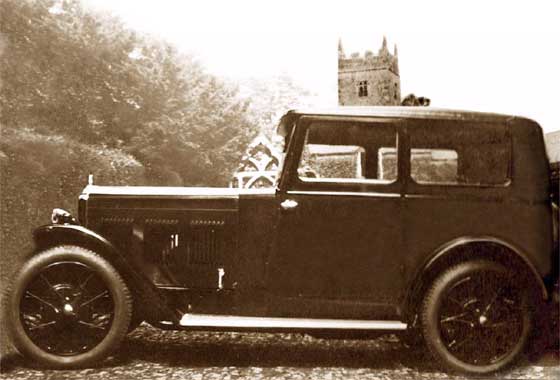
A 1931 Wolseley Hornet saloon style
convertible
The Wolseley Hornet was a
lightweight saloon car produced by the Wolseley Motor Company from 1930 to
1935.
It had a six cylinder (1271cc) engine with a single overhead cam, and
hydraulic brakes. The engine was modified in 1932 to make it shorter and it was
moved forwards on the chassis. In 1935 the engine size was increased to
1378 cc.
Wolseley supplied the firsts cars as either an enclosed saloon with steel
or fabric body or open two seater. From 1931 it was available without the
saloon body, and was used as the basis for a number of sporting specials for
which the customer could choose a styling from a range of coachbuilders. In
1932 Wolsley added two and four seat coupés to the range. For its final year of
production the range was rationalised to a standard saloon and coupé.
A three speed gearbox was fitted to the earliest cars but this was upgraded
to a four speed in 1932 and fitted with synchromesh from 1933. A freewheel
mechanism could be ordered in 1934.The engine was also used in a range of MG
cars.
If
you run a Theosophy Group, please feel free
to
use any of the material on this site
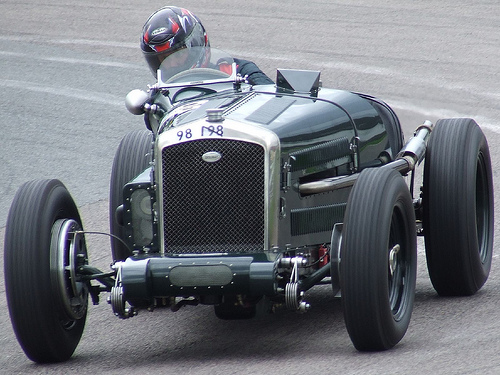
1930s Wolseley Hornet racing car circuiting
the track in modern times
The Most Basic Theosophy
Website in the Universe
A quick overview of Theosophy
and the Theosophical Society
If you run a Theosophy Group you
can use this as an introductory handout.
Theosophy Cardiff’s Instant Guide
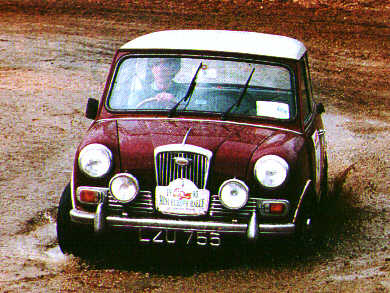
Wolseley Hornet on a rally circa 1963
Theosophical Movement in Wales
as it separates into independent
groups that run do their own show
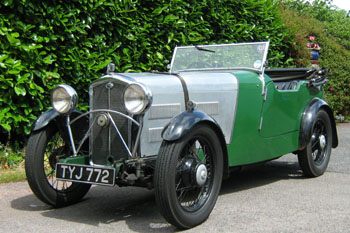
Early 1930s Wolseley Hornet customized
roadster design
Basic front mudguards not extending to
runner boards.
Only the driver gets a windscreen wiper
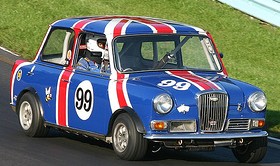
Patriotic Wolseley Hornet on the race track
in 1965
One liners and quick explanations
H P Blavatsky is usually the only
Theosophist that most people have ever
heard of. Let’s put that right
The Voice of the Silence Website
An Independent Theosophical Republic
Links to Free Online Theosophy
Study Resources; Courses, Writings,
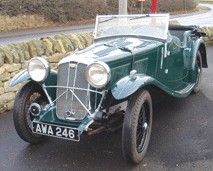
Early 1930s Customized Wolseley Hornet with integrated front mudguards
and runner boards. Two windscreen wipers on
this one.
The main criteria for the inclusion of
links on this site is that they have some
relationship (however tenuous) to Theosophy
and are lightweight, amusing or entertaining.
Topics include Quantum Theory and Socks,
Dick Dastardly and Legendary Blues Singers.

Four views of the car in the picture above
A selection of articles on Reincarnation
Provided in response to the large
number of enquiries we receive at
Cardiff Theosophical Society on this subject
The Voice of the Silence Website
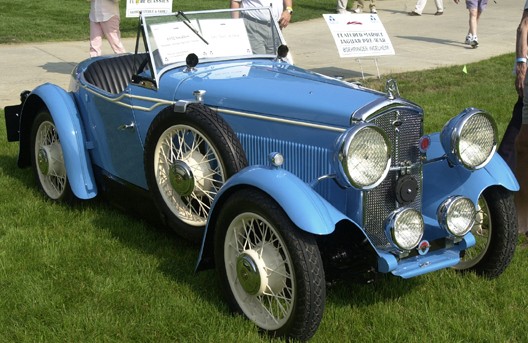
Swallow Wolseley Hornet 1932
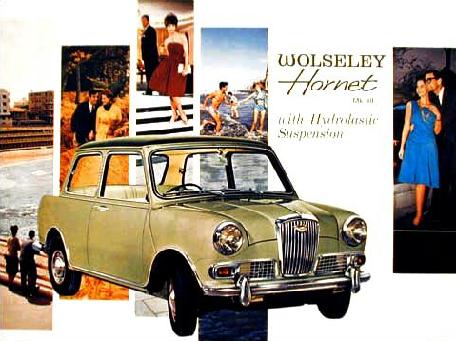
A leaflet promoting the new hydrolastic
suspension introduced in the mid sixties.
This became standard on many BMC models
including the Mini, 1100, 1300
& 1800 models. Suspension was
maintained by means of a sealed fluid system
which was claimed to be very comfortable
but appeared to make some people
seasick in the larger cars. As the cars got
older, the suspension might burst
causing the car’s suspension to collapse on
one side meaning a difficult
drive home or to a garage.
This is for everyone, you don’t have to live
in Wales to make good use of this Website

1930s
No
Aardvarks were harmed in the
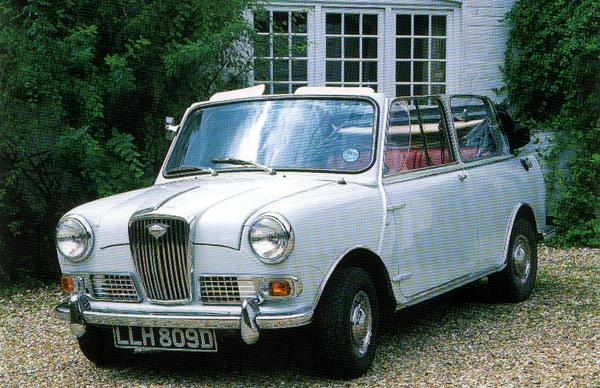
A 1966 Wolseley Hornet convertible by Crayford Engineering
Convertible 1960s Hornets were not standard and were very rare as
were all convertibles in the Mini range.
Crayford did a run of 57 Hornet convertibles for Heinz to be given
as prizes in a competition
Within the British Isles, The
Adyar Theosophical Society has Groups in;
Bangor*Basingstoke*Billericay*Birmingham*Blackburn*Bolton*Bournemouth
Bradford*Bristol*Camberley*Cardiff*Chester*Conwy*Coventry*Dundee*Edinburgh
Folkstone*Glasgow*Grimsby*Inverness*Isle of
Man*Lancaster*Leeds*Leicester
Letchworth*London*Manchester*Merseyside*Middlesborough*Newcastle
upon Tyne
North Devon*Northampton*Northern
Ireland*Norwich*Nottingham
Perth*Republic of
Ireland*Sidmouth*Southport*Sussex*Swansea*Torbay
Tunbridge
Wells*Wallasey*Warrington*Wembley*Winchester*Worthing
The Spiritual Home of Urban Theosophy
The Earth Base for Evolutionary Theosophy
A B C D EFG H IJ KL M N OP QR S T UV WXYZ
Complete Theosophical Glossary in Plain Text Format
1.22MB
__________________
& of course
you don’t need to live in Wales
to take advantage of this guide
_____________________
Camberley,
Surrey, England GU15 - 2LF
Tekels Park to be
Sold to a Developer
Concerns are raised
about the fate of the wildlife as
The Spiritual
Retreat, Tekels Park in Camberley,
Surrey, England is to be sold to a developer
Tekels Park is a 50
acre woodland park, purchased
for the Adyar Theosophical Society in England
in 1929.
In addition to
concern about the park, many are
worried about the future of the Tekels Park
Deer
as they are not a protected species.
Many feel that the
sale of a sanctuary
for wildlife to a developer can only
mean
disaster for the park’s animals
In addition to
concern about the park,
many are worried about the
future
of the Tekels Park
Deer as they
Confusion as the
Theoversity moves out of
Tekels Park to Southampton,
Glastonbury &
Chorley in Lancashire while the
leadership claim
that the Theosophical Society will
carry on using
Tekels Park despite its sale to a developer
Anyone planning a
“Spiritual” stay at the
Tekels Park Guest
House should be aware of the sale.
Theosophy talks of
a compassionate attitude
to animals and the
sale of the Tekels Park
sanctuary for
wildlife to a developer has
Future of Tekels Park Badgers in Doubt
Party On! Tekels Park Theosophy NOT
St Francis Church at Tekels Park
Tekels Park & the Loch Ness Monster
A Satirical view of
the sale of Tekels Park
in Camberley,
Surrey to a developer
The Toff’s Guide to the Sale of Tekels Park
What the men in top
hats have to
say about the sale
of Tekels Park
____________________
The
Theosophy Cardiff Guide to
Pendle Hill, Lancashire, England.
Quick Explanations with Links to More Detailed Info
What is Theosophy ? Theosophy Defined (More Detail)
Three Fundamental Propositions Key Concepts of Theosophy
Cosmogenesis
Anthropogenesis
Root Races
Karma
Ascended Masters After Death States Reincarnation
The Seven Principles of Man Helena Petrovna Blavatsky
Colonel Henry Steel Olcott William Quan Judge
The Start of the Theosophical Society
History of the Theosophical Society
Theosophical Society Presidents
History of the Theosophical Society in Wales
The Three Objectives of the Theosophical Society
Explanation of the Theosophical Society Emblem
Glossaries of Theosophical Terms
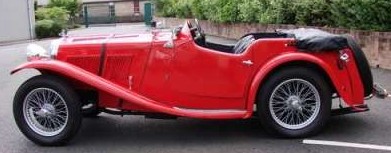
Another good example of a 1930s Wolseley
Hornet
An Outstanding Introduction to Theosophy
By a student of Katherine Tingley
Elementary Theosophy Who is the Man? Body and Soul
Body, Soul and Spirit Reincarnation Karma
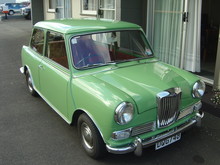
1960s Riley Elf
Outwardly the same as the Wolseley Hornet
except for the badge & grill
A bit more expensive
What Theosophy Is From the Absolute to Man
The Formation of a Solar System The Evolution of Life
The Constitution of Man After Death Reincarnation
The Purpose of Life The Planetary Chains
The Result of Theosophical Study
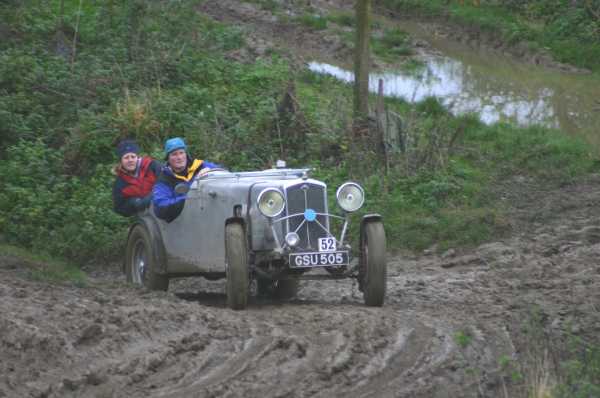
1930’s Wolseley Hornet on a hill climb
trial
An Outline of Theosophy
Charles Webster Leadbeater
Theosophy - What it is How is it Known? The Method of Observation
General Principles The Three Great Truths The Deity
Advantage Gained from this
Knowledge The Divine Scheme
The Constitution of Man The True Man Reincarnation
The Wider Outlook Death Man’s Past and Future
Cause and Effect What Theosophy does for us

Side and rear view of a 1960s Wolseley
Hornet
Try these if you are looking for a local
Theosophy Group or Centre
UK Listing of Theosophical Groups
Please tell us about your UK Theosophy Group
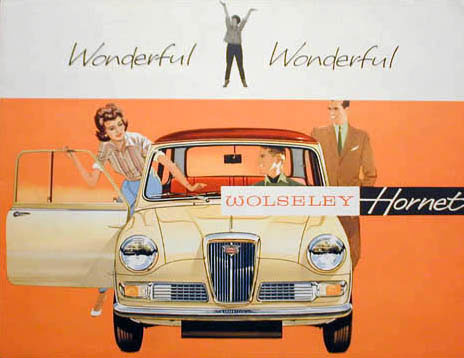
1960s Wolseley Hornet promotional leaflet
___________________
into
categories and presented according to relevance of website.
Web
Directory - Add Link - Submit Article - Online Store - Forum
______________________
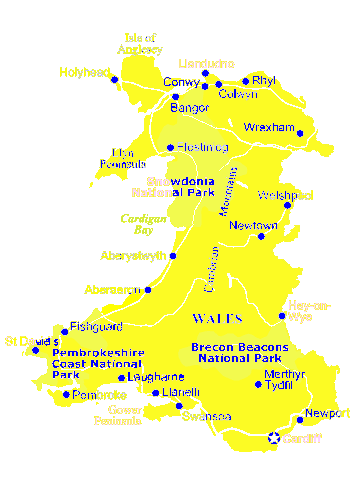
General pages about Wales, Welsh History
and The History of Theosophy in Wales
Wales is a
Principality within the United Kingdom and has an eastern
border with
England. The land area is just over 8,000 square miles.
Snowdon in North
Wales is the highest mountain at 3,650 feet.
The coastline is
almost 750 miles long. The population of Wales
as at the 2001 census is 2,946,200.
________________
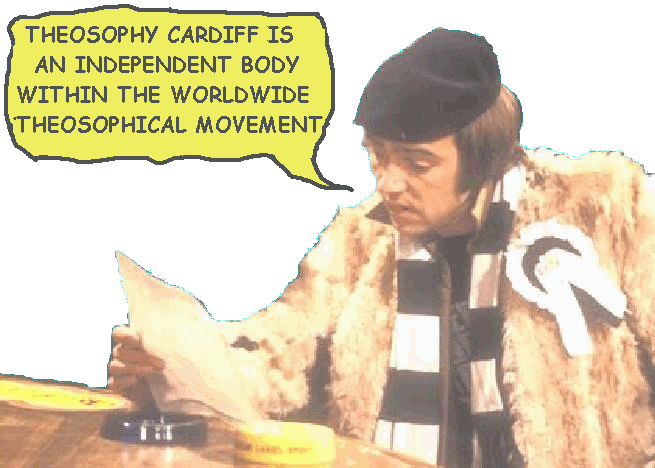
Bangor Conwy
& Swansea Lodges are members
of the Welsh
Regional Association (Formed 1993).
Theosophy Cardiff
separated from the Welsh Regional
Association in March
2008 and became an independent
body within the Theosophical Movement in March 2010
High Drama & Worldwide Confusion
as Theosophy Cardiff Separates from the
Welsh Regional Association (formed 1993)
Theosophy Cardiff cancels its Affiliation
to the Adyar Based Theosophical Society
Cardiff, Wales, UK, CF24 – 1DL
/another-family-job-at-adyar.htm
/cvk-maithreya-manifesto.htm
/singapore-initiative.htm
/control-adyar-or-control-nothing.htm
/good-reason-for-silence.htm
/triumph-of-the-weak.htm
/preethi-muthiah-adyar-profile.htm
/abolitionofpresident.htm
/lack-of-representation.htm
/carry-on-creeping.htm
/preethi-muthiah-letters.htm
/attitude-of-the-theosophical-elite.htm
/international-rules.htm
/members-disqualified.htm
/does-silence-mean-game-over.htm
/gc-concerns-raised.htm
/make-way-for-the-messiahs.htm
/hidden-bad-news.htm
/something-wrong.htm
/gc-2012-minutes.htm
/adyar-internal-problems.htm
/beggars-at-the-door.htm
/cannot-change-will-not-change.htm
/new-committee-nov-7.htm
/victimisation-of-gc-member.htm
/hey-look-a-job-for-his-daughter.htm
/cvk-maithreya-manifesto.htm
/accountable-leadership-urgently-required.htm
President of
Nothing Ballast Open Election?
Adyar Adyar’s Slightly
International Convention
Will there be an
Adyar Free Future? An Extra Box on
the Ballot Paper A Society
Without Members
Is the 2014
Adyar Presidential Election Invalid?
Radha Burnier
Employment Services
Don’t Just Do
Nothing Stand There Adyar, the Sole
Purpose of Adyar Western
President
Save Radha’s
House Ignore the
Voters What an Insult
to Members International
Election Protocol
The Secrecy
Banging the Drum
for Theosophy Burnier Town
Hall The Great
Election Rip-Off
Keeping the
International Headquarters at Adyar ABOLISHThe
International President Bold Initiative
What is Behind
the Attitude of the Theosophical
Elite? Towards a New
Model for Theosophy
Choose a Stooge
SHUT UP &
VOTE Members No
Longer Members A Manifesto
Anybody There?
Now Here’s
Something Worth Keeping Quiet
About Is There Hidden Bad News?
Something Wrong?
Control Adyar or You Control
Nothing Elected
Representation Not Representing
Publicly
Denounced
Make Way for the
Messiahs Does Silence
Mean Game Over
Accountable
Leadership Urgently Required
Can’t Change Won’t Change Beggars at the
Door From The Top
Down Who Owns Adyar?
New Committee?
The Royal Court
of Radha Burnier General Council
Meeting 2013 Minutes Adyar Theosophical
Society International
Rules
Disgraceful
Treatment of an Adyar Employee The Preethi
Muthiah Letters Concerns Raised General Council 2012 Meeting
Minutes
Adyar Internal
Problems Is Adyar Still The
Headquarters? Creep On! General Council
Good Campaign
Pitch, Mr Singhal
Adyar Prepares
for the Break-Up Profile of Adyar
Adyar Family
Appointment Another Family
Power Appointment
Triumph of the
Weak Adyar Job News
No Stand For
Democracy Bent election?
A Society
Without Leadership
Who will Believe
It? Supporting
Adyar? Long Tradition
of Bullying at Adyar
Summary
Dismissal Trouble at
t’Mill
True Purpose of
the 2014 Election
What Makes this
Election Invalid? Trouble Was Your Vote
Counted?
Not Being at
Adyar Democracy in the
Adyar Theosophical Society R.I.P. 11,432 Votes
No Right To
Complain
President’s Inauguration
Pray Silence
It’s Silence as
Usual Who Can Support The Leadership
Now? Shut Up &
Pay Up
President? Really? Adyar & the
US each have Half a President The White Lotus
Hi-Jack Don’t Anybody Ask Me Anything
Is this the Great Wheaton
Rip-Off? Master of the
Small Event The Adyar
Payments Scam CVK Maithreya
Deserved Better Treatment
Staff Treatment
At Adyar Is Wheaton Set
To Support Adyar? CVK Maithreya is
Presidential
Why was
Campaigning Banned
Adyar
Allegations Climate of Fear
Police Action
Threatened QUICK
The Prisoner of
Adyartraz Preethi’s
Allegations 2014 Election
One Man, One
Vote Poor Adyar
Future CVK Maithreya For
Vice-President The General
Council Should Allow Visiting Adyar
D V
Subramaniam’s Posthumous Letter of
Complaint The Amnesty
International Paradox Did you get an
Invite?
Serious Concerns
Raised 2014 Election
Result? The Sundaram Nomination Sham Call for
Emergency Meeting
The Inauguration That Never Was Serious Concerns
Election
Committee Ignores
Misconduct Bent Election
Result
Suspend Call for Action Raise the White
Flag Staff Bullying Why Did The 2014
Election Go Ahead?
Tim Boyd
A Leadership at
War Ignore the
Bullying General Council Ignores
Calls MONEY TO ADYAR? The Great Giveaway
